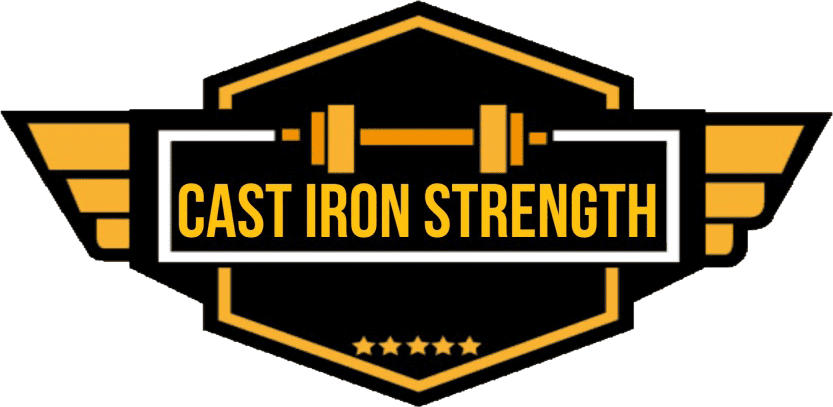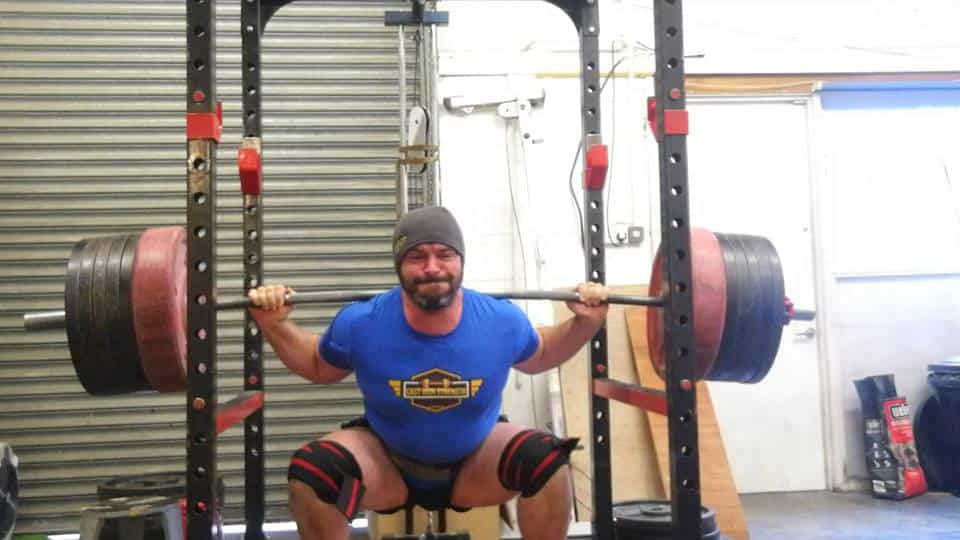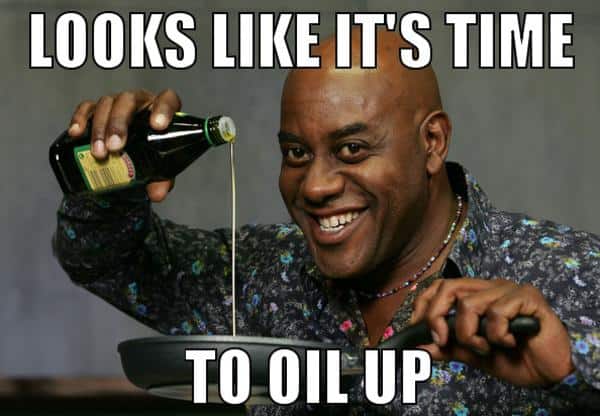What programme are you on at the minute? The powerlifting version of how’s the weather, small talk we make with people we see in the gym every now and again who we haven’t spent enough time with to tell if we like or loathe them. As they inhabit gym goer Limbo are they going to be your next training partner your bro in shining gym shark or are they going to be that asshole who always feels the need to talk to you when you’ve got your autistic shield up aka your beats headphones.
Small talk does give us a bit of a window into the common psyche of the people around us. For instance, in an island like Britain sitting in the North Sea as it is, Atlantic to the left of us and cheese-eating surrender monkeys to the right the weather is naturally incredibly changeable. This changeable weather means it is a constant source of non-committal mouth noise we can share with people we don’t really know.
Programmes very much share that same function with people who train in the free weights area of the gym as they hop mindlessly from one template to another wondering which one is going to give them the best gains. There is nothing wrong with programmes online they are merely a loading cycle or a period of training put together for a finite period of time.
The issue lies with the lifter who thinks randomly jumping on training programs with no appreciation of where they are currently and where they are going is a good idea. As a new lifter, you are not qualified to know where you are currently and how best to advance. This is completely understandable but as a new car owner with a major mechanical engine fault, you are not qualified to try and solve this problem either so you seek help.
Exercise and training seems to be one of the few areas in life where the do it yourself approach seems to be the most commonly practised method of proceeding which is odd considering how much more valuable your body is vs your car. I wish I could say hiring a personal trainer or joining a group training programme would help you but that would mean I had confidence in group training or personal training at large which would be far from the truth.
As a lifter, if you want to improve you need to ensure that you are progressing the following variables
- Technical ability
- Volume / Work Capacity
- Intensity
- Psychology / Ability to perform under duress
Your training program needs to be put together in a way that means you are moving forward continually while allowing you sufficient recovery to help you stave off injury and adapt to the demands placed on you by the program.
Where you are currently isn’t really something you can assess reliably yourself without a fair amount of experience and even with that experience you are probably still better off having a professional do the work for you as they can be objective in a way you never will be able to. Note in the fitness industry professionals are the exception, not the norm ensure you do your due diligence before hiring a trainer or coach.
Where you are at currently, right now in your training isn’t something we can do in an article, a seminar or video series as every single lifter and individual will have their own areas to work on and their own calendars to work to. What can do however is show you how to sequence your training in a way that will ensure you are moving from one block of training to the next clear in your objective and helping to ensure whatever the proceeding block of training is you are prepared to maximise it.
Block or Phase Potentiation
The first thing we need to understand before we move forward with how to put together the larger picture of training is the Long Term Lag of Training Effect (LTLE) this basically states that in training or imposing adaptation the fitness gain or outcome/adaptation of that training will take some time to show itself. For different physical capacities, this effect can take longer to show itself, for instance, most fitness training will show some benefit in days whilst for maximal strength training it can take 2-4 weeks for you to see the increased fitness (strength in this case) from the overload or stress you have put your body through in training.
Building LTLE into your training programming and sequencing – since we know that stress or exercise we undergo will take it’s time to show itself in our increased abilities we should be looking to build this into our training organisation. If we undergo a heavily technique influenced phase of training we won’t see the gain in technique really come through for a few weeks after the training load or after the training block has been completed. We may see the improvement in movement throughout the block but we won’t see the stable execution of the changes or more efficient movements coming through for a number of days and weeks after the bulk of the training has since passed.
More efficient movement will allow a lifter to handle a larger volume of training without loading the body in the wrong way. If for instance the lifter can keep the stresses on the spine compressive in nature (coming from the top down) then they will be able to perform more volumes of spinal loading exercises such as squats and deadlifts than before the changes were made to their technique.
Phase or block potentiation basically takes the knowledge that adaptations to the stress demands placed on the body will take time to show through. With full knowledge of this, the coach or athlete can work out in advance what the goal of training will be for each block and how it will help them advance in the following period of training.
Correlation between muscle size and force production
Hypertrophy or Work Capacity blocks – One of the most commonly used block potentiation methods is the use of a hypertrophy or “work capacity” bock moving into a strength focused block of training. This is to allow the increased cross sectional area gained from the hypertrophy work to potentiate the strength gains in the following blocks of training. The higher workloads associated with hypertrophy or work capacity based training also prepare the lifter to be able to with stand a higher training volume. This increased capacity to handle volume can allow them to perform higher workloads at 80-90%. An increased work output at these percentages will show itself as an increase in maximal strength with a very high degree of probability verging on certainty.
The same line of thought can be carried through for technique work or technique block as it can positively influence a lifters ability to perform volume and to load their body correctly which can potentiate pretty much any block of training you are going into.
Common block themes in powerlifting/strength training and a brief discussion of their aims.
Preparatory or Technique – before undergoing a high-stress load block or as a break from more stressful periods of training you may wish to focus more on technique and movement quality. There are ways of quantifying this progress through the use of video feedback, bar speed metrics and observation from a coach. The goal of the block is to challenge the core skills of the sport in a way which will produce a positive outcome for the lifter undergoing the training. For instance, a lifter who struggles with falling forward in the squat might shift over to high bar squat, front squat, tempo squat and pin squat as their focus lifts for this period of time to help them work out how to balance the bar better throughout the lift.
A common version of this kind of block I will use for my lifters is to remove their supportive equipment for a period of time to help them put the co-ordination of the main lifts under a bit more scrutiny. This may mean removing knee sleeves and belt for squat and belt for the deadlift. Almost without fail after performing a block like this when they add in the supportive equipment again and enter a more strength focused block, they realise a very good return from their training.
One of the most recent examples of this was one of my Edinburgh barbell lifters a Katy (u72) at the Recent British championships who managed to add 25kg to her competition result in squat (Going from a best of 135kg to 160kg) following on from her competition in October where she managed a 5kg improvement (going from 130 kg to 135kg). She also managed a +7.5kg increase in her best bench result and a +10kg increase in her best deadlift result. She narrowly missed 175kg on deadlift which would have been a +15kg result.
The springboard for these results was the beltless and technique focus we adopted with her for the 6 weeks going from her last competition into Christmas last year. Without that period of training, there is no way we would have gotten the results she managed at the British Championships. All of the credit for these improvements lie at the door of the lifter as without their diligence and attention to detail then improvements will always be lacking.
Strength Blocks – Strength blocks make up the main bulk of most lifter’s programming they are designed to produce an overload in a cyclical manner that will result in an increase in maximal strength every time the training cycle is executed. Typically, they shouldn’t be massively fatigue inducing outside of what is needed for the lifter to increase their top end strength.
Examples of cyclical blocks are pretty much every online programme that isn’t a smolov variant or the Russian squat routine. Most of the programmes I have written and put out to the public for free fall into this category. They can utilise a linear structure (high volume and low intensity to low volume and high intensity in a finite time frame) a non-linear or undulating structure (regular changes to volume and intensity) but they are designed to make a positive increase in the lifter’s fitness in a 4 to 6-week time frame and can run back to back.
Most of the volume in these blocks will take place in the “meaningful volume” (70-90% of 1 RM) zone we discussed briefly before.
Competition Focus Blocks –
These blocks of training will be designed to allow the lifter or athlete the best possible chance to display the fitness (strength in this case) they have gained or that they have during a competition setting. These blocks of training will involve wearing whatever equipment the lifter will be using in competition to allow them to acclimatise to lifting in it.
1-3 weeks of this block will be a taper where the lifter will be reducing the overall volume of the training to allow them to bring down their levels of fatigue. When combined with the correct amount of heavy lifting should bring the lifter to a stage where they are ready to produce a “peak” performance where their fatigue levels are low and their skill level is high which should allow them to produce the maximum result their fitness will allow at that moment in time. This will make up the last 2-3 weeks of the block.
For longer competition blocks before moving into the peak the athlete might move into a transition period where they are getting prepared for the competition by making sure they are lifting to competition standard and that they are coming into the peak in a good place in terms of technique, strength, being as injury free as possible and not being under undue amounts of fatigue.
Overreach/Overload Blocks – these blocks are designed to take advantage of the principal of supercompensation.
In sports science theory, supercompensation is the post-training period during which the trained function/parameter has a higher performance capacity than it did prior to the training period.[1] Wikipedia 2018
Supercomepnsation has been a known quantity in sports science for quite some time being first put forward as a theory by Soviet sports scientists in 1949. It has also been noted that putting athletes under high-stress loads and deliberately not allowing for full recovery will result in a sharp increase in performance when the fatigue was pulled back at the correct time. This quirk of training has been labelled as overreaching. Basically by putting the athlete under a high volume of work and deliberately inducing high amounts of fatigue will result in a large spike in supercompensation if they workload is pulled back at the correct time and in the appropriate manner.
This can be a risky process however and not one I would recommend for someone programming for themselves or novice coaches. The danger is moving from a period of overreach and into overtraining. Once you move into a state of overtraining or an over-accumulation of fatigue the recovery process can be a long and complicated one.
A good example of an overreach programme is the Smolov programme the initial 3 weeks base cycle is a 3-week overreach cycle followed by taper and intensification. Smolov has been getting huge results and injuring lifters in equal measure online for well over a decade.
Recovery Blocks – Recovery blocks aren’t really planned or talked about much in powerlifting but there are times in every athletes season when they will require detraining of some description to allow their body time to catch up, heal niggles and give them the mental respite necessary to get hungry for their next period of training. Professional sports tend to have this time naturally occurring in their calendar with off seasons built into the annual competition calendar. A lot of people in professional rugby are worrying about the international game interfering with this as internationals typically happen in down periods in the professional game.
Dedicated amateur athletes tend to hate time off they try to find gyms during holidays or try and work out how they are going to train during Christmas. Weightlifters, Powerlifters and Crossfiters don’t really know what an offseason is or are psychotically obsessed with not having their “gains” disappear into thin air from not training.
2-3 weeks of time away from your sport can be priceless as it will let small tissue tears and other niggles which are not getting the time they need to recover. By giving small niggles and issues time to heal you might just extend your career by a year or two.
Now that we have discussed the generalities of different categories of training blocks and their content we need to learn how to put them together. In the next part of this series, we will discuss how to put these training blocks together in sequence for two different and very common goals.
Marc























